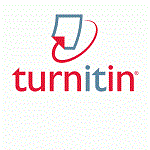Improvement of Prospective Teacher Mathematics Reasoning Ability Using Numeration Assisted E-Learning
DOI:
https://doi.org/10.25273/jipm.v10i1.10347Keywords:
Improvement, Reasoning, Numeration, E-LearningAbstract
Downloads
References
Ahmad, DP (2018). Application of Realistic Mathematics Learning to Improve Students' Mathematical Communication Ability. Journal of Mathematics Education, Vol. 7. No1 389-400.
Arikunto, S. (2016). Education Evaluation Basics .Edition 2. Jakarta: Earth Literacy.
Chan, SW, & Zaleh, I. (2014). Developing statistical reasoning assessment instrument for high school students in descriptive statistics. Procedia-Social and Behavioral Sciences, 116, 4338-4343.
Cheung, K. C. (2012). Conceptualization of The PISA Mathematical Literacy Proficiency Scale: A Validation of Its Cognitive Components. Presented at The East Asia Forum on Mathematics Competence and Their Assessment, 10-11 May 2012, East China Normal University, Shanghai.
Dalyono, Bambang & Agustina, Dwi Forgive. (2016). Professional Teachers as Determinants of Quality Education. Journal Polines, Vol: 2 No: 2. October 2016
Dewi, K., dan Wardono. (2015). Improving Students' Mathematical Literacy Through Realistic Innovative Learning Edmodo E-learning Contains Independent Creative Intelligent Characters. Jurnal Matematika Kreatif-Inovatif (Kreano). 6 (1): 93-100
Goos, M., Dole, S., & Geiger, V. (2011). Improving Numeracy Education in Rural Schools: A Professional Development Approach. Mathematics Education Research Journal, 23(2), 129.
Hartatik, Sri & Nafiah .(2020). Education and Human Development. Journals; Vol. 5(1); ISSN. 2541-0156; e-SSN. 2559-0292 ;p . 32-42 https://journal2.unusa.ac.id/index.php/EHDJ/ index doi : 10.33086/ehdj.V5i1.1456.
Invany Idris, DK (2016). Application of the Indonesian Realistic Mathematics Education (PMRI) Approach to Improve Story Problem Solving Ability in Class VII A SMP UTY. Journal of EduMatScience, Vol. 1. No. 1. 73-82.
Jayanti and Marhamah, (2021). Learning Number Based Theory on Edmodo Using the Context PMRI of the Palembang PGRI Building and Apam Cake.Proceedings of Wos: Atlantis Press. vol 513 Online January 2nd, 2021. ISBN: 978-94-6239-313-4 ISSN: 2352- 5398 DOI https://doi.org/10.2991/assehr.k.201230.166 582-587
Jayanti and Rahmawati (2017). Improving Student's Mathematic Reasoning Ability Using The Blended Learning Assisted Generative Learning Model (MPG) At The Universitas PGRI Palembang. SNMPM 2017 Proseding UNSRI pp 79-84
Kesumawati, N., & Aridanu, I. (2018). Statistik Parametrik Penelitian Pendidikan. Palembang: NoerFikri Offset.
Ministry of Education and Culture, (2020). Merdeka Learning page url : https://kampusmerdeka.kemdikbud.go.id/
Ministry of Education and Culture . (2017). PISA Program for International Student Assessment [Online]. Available: https://puspendik.kemdikbud.go.id/s seminar/index.php ?folder = Socialization %20PISA%202018 [ accessed 22 May 2020]
Narut, Yosef Firman & Kanisius Supardi. (2019). Scientific Literacy of Students in Science Learning in Indonesia. Journal of basic education innovation.
NEA, (2011). Preparing 21st Century Students for a Global Society: An Educator's Guide to the “Four Csâ€. Washington: NEA
Noor, J. (2017). Metodologi Penelitian. Jakarta: PRENADAMEDIA GROUP
OECD. (2019). Indonesia - Country Notes - PISA 2018 results . Received from
https://www.oecd.org/pisa/publications/PISA2018_CN_IDN.pdf
Putri. R.I.I (2020). Learning to Build Flat Materials through Stories using the Indonesian Realistic Mathematics Education Approach (PMRI) in Elementary Schools. https://media.neliti.com/media/publications/121305-ID-pembelajaran-materi-bangun-datar-melalui.pdf
Ramadhani Barkah, - (2020) Learning Motivation and Factors Influencing It in Engineering Mechanics Subjects for Class X Students Competency in Modeling Design Skills and Building Information at SMKN 9 Garut. S1 thesis, Universitas Pendidikan Indonesia. http://repository.upi.edu/id/eprint/52023 http://repository.upi.edu/en/eprint/52023
Risdiyanti, I., & Prahmana, RCI (2020). Learning trajectory using number pattern learning The story of the war of Barathayudha and Uno stacko. Jurnal Pendidikan Matematika, 11 (1), 157-166. https://doi.org/10.22342/jme.11.1.10225.157-166
Sugiyono. (2017). Metode Penelitian Kuantitatif, Kualitatif dan R&D. Bandung: Alfabeta.
Tim, GLN (2017). Supporting Materials for Numerical Literacy National Literacy Movement. Jakarta: Kemendikbud.
Ulpah, M. (2013). Improving Statistical Reasoning Ability and Self-Efficacy of Madrasah Aliyah Students Through Contextual Learning. UPI Central Library repository. 193-197.
Zulkardi, Meryansumayeka, Putri, RII, Alwi, Z., Nusantara, DS, Ambarita, SM, Maharani, Y., & Puspitasari, L. (2020). How students work with math tasks like PISA using the COVID-19 Context. Journal of Mathematics Education, 11 (3), 405-416. https://doi.org/10.22342/jme.11.3.12915.405-416
Downloads
Published
Issue
Section
License
Every accepted manuscript should be accompanied by "Copyright Transfer Agreement" prior to the article publication.
JIPM (Jurnal Ilmiah Pendidikan Matematika) by http://e-journal.unipma.ac.id/index.php/JIPM is licensed under a Creative Commons Attribution-ShareAlike 4.0 International License.
Â
Â






